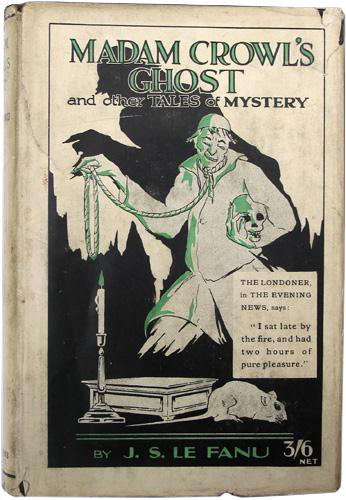Tis the season for spooky old books, and one of my very favorites is a hidden gem—Ruth Edna Kelley’s The Book of Hallowe’en (1919). Kelley was a young librarian at the public library in Lynn, Massachusetts when she researched and wrote it, and for many years it was the only serious history of Halloween and its origins in bygone cultures and customs. Her book weaves anthropology, folklore, poetry old and new, and a sampler of rhymes and party games into a lovely evocation of the season. She worked at the library until 1955—Lynn library staff say she haunts the stacks to this day.
Like many holidays, Halloween has ancient roots and centuries of overgrowth. Kelley reminds us that Halloween is a sun festival, one of the cardinal points of the year—for the Celts it was Samhain, the end of the old year and the start of the new. Summer’s end, the time for harvest and preparations for winter. The sun... “has always marked out work-time and rest, divided the year into winter idleness, seed-time, growth, and harvest; it has always been responsible for all the beauty and goodness of the earth; it is itself splendid to look upon. It goes away and stays longer and longer, leaving the land in cold and gloom; it returns bringing the long fair days and the resurrection of spring...The pagan Hallowe’en at the end of summer was a time of grief for the decline of the sun’s glory, as well as a harvest festival of thanksgiving to him for having ripened the grain and fruit…”
Through the ages, a variety of cultures and observances were syncretized into our modern idea of Halloween:
“Pomona, the Roman goddess of fruit, lends us the harvest element of Hallowe’en; the Celtic day of ‘summer’s end’ was a time when spirits, mostly evil, were abroad; the gods whom Christ dethroned joined the ill-omened throng; the Church festivals of All Saints’ and All Souls’ coming at the same time of year—the first of November—contributed the idea of the return of the dead; and the Teutonic May Eve assemblage of witches brought its hags and their attendant beasts to help celebrate the night of October 31st.”
In her excellent Trick or Treat: A History of Halloween (2012), Lisa Morton confirms most of this but corrects the part about Pomona—there was, in fact, no festival for the Roman goddess that contributed to our modern Halloween, an error that made it into the record somewhere along the way. Trick or Treat is illustrated, learned, and accessible, pairing nicely with The Book of Hallowe’en, which is a joy to hold and behold, and beautifully evokes the gentler, spookier Halloween of a century ago, long before slasher movies, strobe lights and poisoned-candy scares.
From Kelley, we learn the stories of Tam o’ Shanter and Jack-o’-Lantern, Welsh superstitions, French All Souls’ Day customs, Scottish recipes, cabbage broth was a regular dish at the Hallowe’en feast, and Walpurgis Night legends, as well as handy household tips such as this one:
“A Hallowe’en mirror is made by the rays of the moon shining into a looking-glass. If a girl goes secretly into a room at midnight between October and November, sits down at the mirror, and cuts an apple into nine slices, holding each on the point of a knife before she eats it, she may see in the moonlit glass the image of her lover looking over her left shoulder, and asking for the last piece of apple.”
Another spooky must-have is New England Legends and Folklore, compiled by journalist Samuel Adams Drake in 1884. Drake is out to chill our blood by any means necessary with his non-stop miscellany of strange adventures, tall tales, witchy poems, true crime, haunted trees, and hidden treasures, with a spine-tingling woodcut on every other page. Open it anywhere for a chill and a thrill.


There are too many good ghost storybooks and authors to even begin to list them, but I must tip a favorite—Joseph Sheridan Le Fanu, an Irish contemporary of Bram Stoker’s who never hit it big with a blockbuster like Dracula but perfected the art of the uncanny tale in collections like In a Glass Darkly and Madam Crowl’s Ghost, and his vampiress novella Carmilla. Nothing summons the otherworldly quite like a Le Fanu tale. M.R. James was a fan, personally assembling and editing Madam Crowl’s Ghost.





